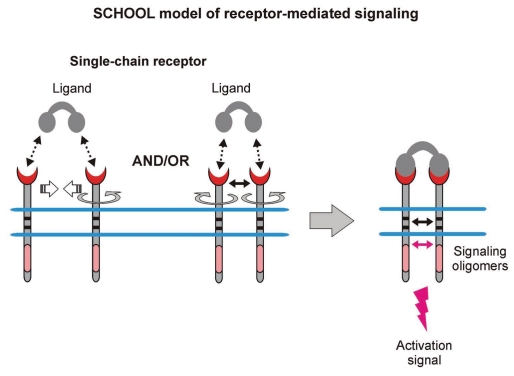Figure 5.
Ligand-induced SR clustering and reorientation (in pre-existing SR clusters, ligand binding induces receptor reorientation) results in SR oligomerization mediated by transmembrane interactions. In these oligomers, receptors are in sufficient proximity and adopt a correct (permissive) relative orientation and geometry to promote homointeractions between cytoplasmic domains. Within the model, formation of competent signaling oligomers in cytoplasmic milieu is necessary and sufficient to generate the activation signal (for receptor tyrosine kinases, this means trans-autophosphorylation of Tyr residues in cytoplasmic signaling sequences), thus triggering downstream signaling pathways. Protein-protein transmembrane and cytoplasmic interactions are shown by solid black and magenta arrows, respectively. Abbreviation: SCHOOL, signaling chain homooligomerization.

